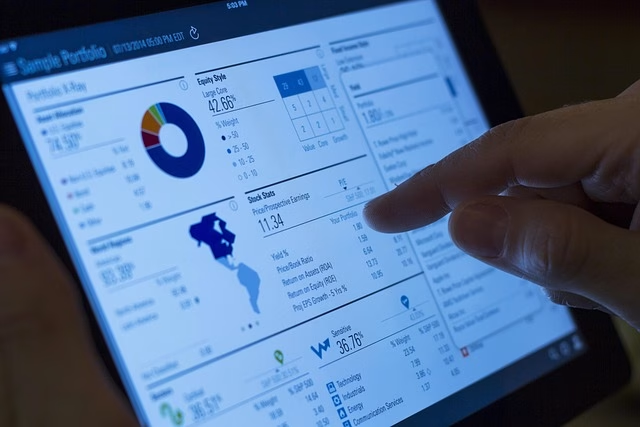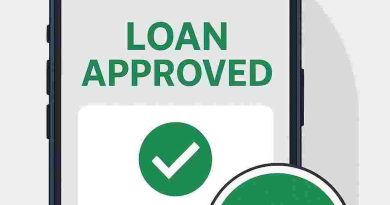Beginner’s Guide: How to Invest Smartly Without Losing Money in 2025
Learn how to invest smartly without losing money in 2025. Step-by-step beginner’s guide, best strategies, and risk management tips for global investors
Why Smart Investing Matters in 2025
Investing is no longer a luxury for the wealthy — it’s a necessity for anyone seeking financial freedom. With inflation eating away at savings, and global markets moving faster than ever, investing smartly has become the difference between building wealth and falling behind.
But here’s the truth: most beginners don’t lose money because investing is “too risky”. They lose money because they:
- Invest without a plan.
- Chase hype stocks or “get-rich-quick” schemes.
- Panic when markets dip.
This guide is designed to help you start investing smartly in 2025 without losing money. You’ll learn step-by-step strategies, see real-life case studies, and discover tools that make investing simpler than ever.
By the end of this article, you’ll have a clear, personalized plan to start investing today — with confidence and clarity.
Step 1: Assess Your Financial Situation

Before investing, check your financial foundation. Think of it as building a house: the stronger your base, the safer your future wealth.
Key Checks:
- Emergency Fund: Save 3–6 months of living expenses. (Read: Build Emergency Fund Fast: 5 Simple Global Guides
- Debt Management: Pay off high-interest debt first (credit cards, payday loans).
- Budget Review: Only invest with discretionary income.
Example:
If you spend $2,000/month → Emergency fund = $6,000–$12,000.
Pro Tip: Keep this money in a high-yield savings account or money market fund, not in the stock market.
If you don’t have an emergency fund yet, make that your first financial goal before investing.
Step 2: Define Your Goals & Risk Tolerance

Every investor is different. Some want to retire early, others want to save for a house or children’s education.
Questions to Ask Yourself:
- Am I investing for short-term (1–5 years), medium-term (5–15 years), or long-term (15+ years)?
- How much volatility can I handle without panicking?
Risk Tolerance Levels
| Profile | Strategy Example | Risk Level |
|---|---|---|
| Conservative | Bonds, Index Funds | Low |
| Balanced | 60% Stocks + 40% Bonds | Medium |
| Aggressive | Tech Stocks, Emerging Markets | High |
Example: A 25-year-old with decades to invest can afford more risk than a 55-year-old nearing retirement.
Tip: Understanding the difference between risky and safe options is crucial. (See: Riskiest vs Safest Investments Guide)
Action Step: Write down your top 3 goals (e.g., retirement, house, kids’ education) and decide your time horizon. That will determine your portfolio strategy.
Step 3: Understand Investment Types

Before investing, you need to know what you’re buying.
The Core Asset Classes:
- Stocks: Ownership in companies. High growth potential, high volatility.
- Bonds: Loans to governments/companies. Safer, steady returns.
- ETFs/Index Funds: Bundles of stocks or bonds. Diversified, beginner-friendly.
- REITs: Real estate exposure without owning property.
- Alternatives (2025 trend): Fractional real estate, AI/green energy ETFs, regulated crypto ETFs.
Case Example: Instead of buying just Tesla shares, you could buy an EV ETF that includes Tesla + BYD + Rivian, reducing risk.
Pro Tip: AI-powered investment tools can make this easier. (See: Top 7 AI Tools in 2025 That Can Save You Time and Money in Finance)
Start with ETFs or index funds. They’re cost-efficient, diversified, and require little experience.
Step 4: Choose a Trustworthy Broker or Platform

Your broker is your gateway to investing. In 2025, there are countless apps, but not all are equal.
What to Look For:
- Low fees: Avoid brokers with high commissions.
- Security: Must be regulated + insured.
- Ease of use: A clean app with educational tools is a must for beginners.
- Global access: Multi-currency support for expats and digital nomads.
Popular Platforms (2025):
- U.S.: Robinhood, Fidelity, Schwab
- Global: eToro (social trading), Interactive Brokers
- Expats: Revolut, Wise
Open a brokerage account today — even if you don’t invest right away. Taking the first step makes investing real.
Step 5: Build a Diversified Portfolio

Diversification = your safety net. It spreads risk across different assets so one bad investment doesn’t wipe you out.
Sample Beginner Portfolio Allocations (2025)
| Risk Profile | Stocks/ETFs | Bonds | Alternatives (Gold, REITs, Crypto ETFs) | Cash | Example Mix |
|---|---|---|---|---|---|
| Conservative | 30% | 50% | 10% | 10% | 30% MSCI World ETF, 50% Bond ETF, 10% Gold ETF, 10% Cash |
| Balanced | 60% | 30% | 10% | — | 40% S&P 500 ETF, 20% Emerging Markets, 30% Bonds, 10% REIT |
| Aggressive | 80% | 10% | 10% | — | 50% Nasdaq ETF, 30% Global Growth ETF, 10% Bonds, 10% Crypto ETF |
Case Study: During COVID-19, investors who had only airline stocks lost massively. Those with diversified portfolios balanced losses with gains in tech and bonds.
Pick one of these models that matches your risk tolerance and start with it. You can adjust as you grow.
Step 6: Start Small, Monitor & Adjust

You don’t need $10,000 to begin. Start with small, consistent contributions.
- Dollar-Cost Averaging (DCA): Invest fixed amounts monthly (e.g., $100). This smooths out market ups and downs.
- Rebalance annually: If one sector grows too large, shift money back to balance.
- Avoid emotional investing: Don’t panic-sell during downturns.
Many beginners lose money by falling into scams promising “guaranteed returns.” (Read: Investment Scams to Avoid in 2025 (Protection Guide))
Action Step: Set up automatic monthly contributions to your brokerage account. Even $50/month compounds significantly over time.
Step 7: Use Tools & Resources in 2025

Today’s investors have access to powerful tools like robo-advisors, budgeting apps, and AI-driven platforms.
Try external resources: Investopedia’s Investing Basics and Morningstar for investment research.
Today’s investors have access to powerful tools:
- Robo-Advisors (Betterment AI, Wealthfront, Nutmeg): Build portfolios automatically.
- Budget Apps (YNAB, Mint, Revolut): Track spending & savings.
- Learning Platforms (Coursera, Investopedia, Khan Academy): Improve financial literacy.
Pick one app (budgeting, robo-advisor, or education) and start using it this week. Small habits create big financial wins.
Global Risks & Mistakes to Avoid
- Overconfidence: Don’t chase hype stocks or crypto trends blindly.
- Scams: Fake brokers and Ponzi schemes are still common in 2025. (See: FINRA Investor Protection)
- Currency risk: Global investors must watch exchange rates.
- Short-term panic: Selling in downturns kills long-term gains.
Always check if your broker is regulated (SEC, FCA, MAS, ESMA). Avoid “too good to be true” promises.
Real-Life Case Studies
1. Emily — The Young Professional (25)
- Portfolio: 80% stocks, 10% bonds, 10% crypto ETF.
- Lesson: She takes advantage of her long time horizon.
2. David — The Family Man (45)
- Portfolio: 60% stocks, 30% bonds, 10% REITs.
- Lesson: Balances growth with stability for kids’ education + retirement.
3. Maria — The Near-Retiree (60)
- Portfolio: 30% stocks, 50% bonds, 10% gold, 10% cash.
- Lesson: Prioritizes capital preservation and income.
Identify which case study matches your stage in life and model your portfolio accordingly.
Portfolio Journey Timeline: 20s → 60s+
| Age Group | Focus | Example Mix | Why It Works |
|---|---|---|---|
| 20s | Growth | 80% stocks, 10% bonds, 10% crypto/REITs | Long time horizon. Risk-friendly. |
| 30s | Growth + stability | 70% stocks, 20% bonds, 10% REITs/Gold | Starting family, more responsibility. |
| 40s | Balance | 60% stocks, 30% bonds, 10% REITs | Protects assets while still growing. |
| 50s | Preservation | 50% stocks, 40% bonds, 10% cash | Closer to retirement. |
| 60s+ | Income & safety | 30% stocks, 50% bonds, 20% cash/gold | Focus on withdrawals, low volatility. |
Check where you are in the timeline and adjust your portfolio accordingly.
Beginner-Friendly Strategies for 2025
- Index Fund Strategy: Low-cost, simple, steady.
- Core-Satellite Strategy: Core in ETFs, small % in riskier assets.
- Dividend Investing: Build passive income streams.
- Thematic Investing: Ride trends like AI, clean energy, healthcare.
FAQs
- Q: Can I invest without ever losing money?
A: No. But you can minimize losses with diversification and risk management. - Q: How much do I need to start?
A: Even $50/month works. Consistency > amount. - Q: Is crypto safe?
A: Only as a small % (max 10%). Stick to regulated ETFs if available.
Conclusion + Next Steps
Investing smartly in 2025 isn’t about avoiding all risk — it’s about controlling risk while letting your money grow.
1. Build your safety net.
2. Define your goals and tolerance.
3. Start with diversified ETFs.
4. Stay consistent and patient.
Don’t wait for the “perfect moment.” The best day to start was yesterday. The second-best day is today. Open your brokerage account, set up your first $100 investment, and begin your journey to financial independence.



